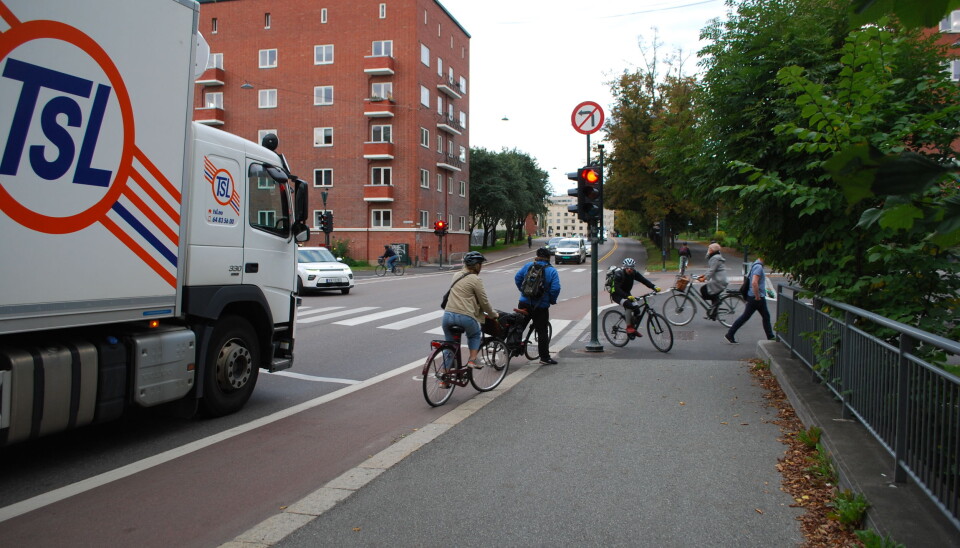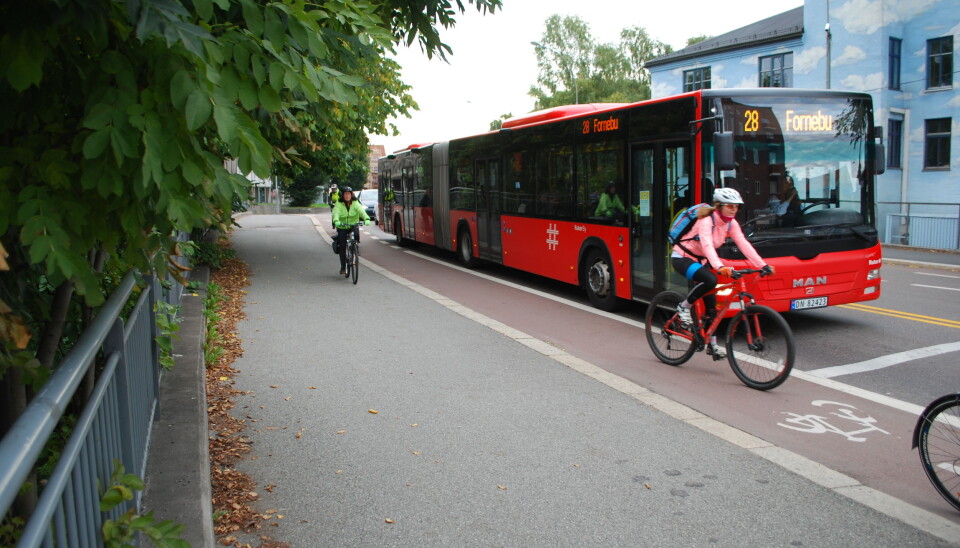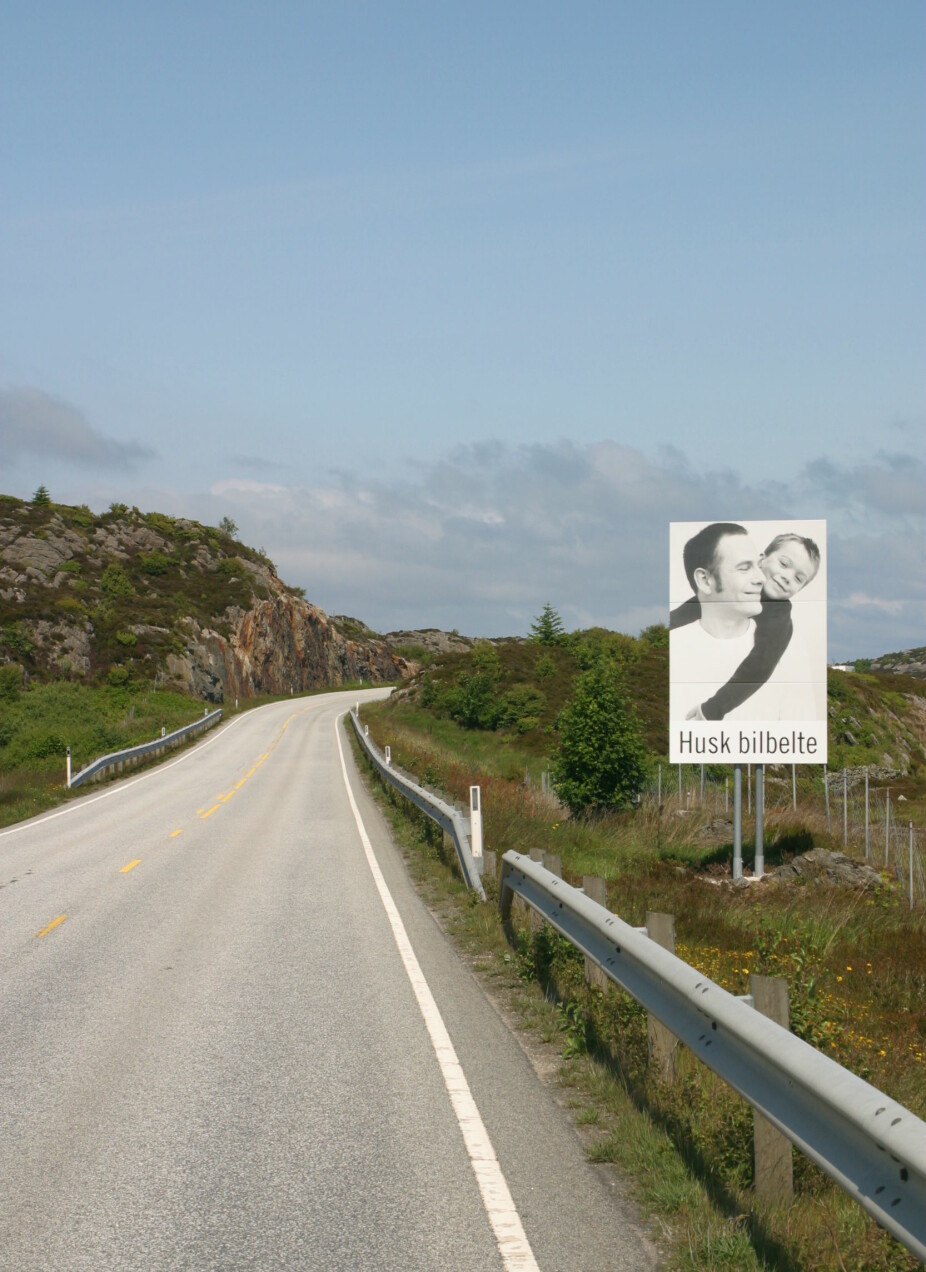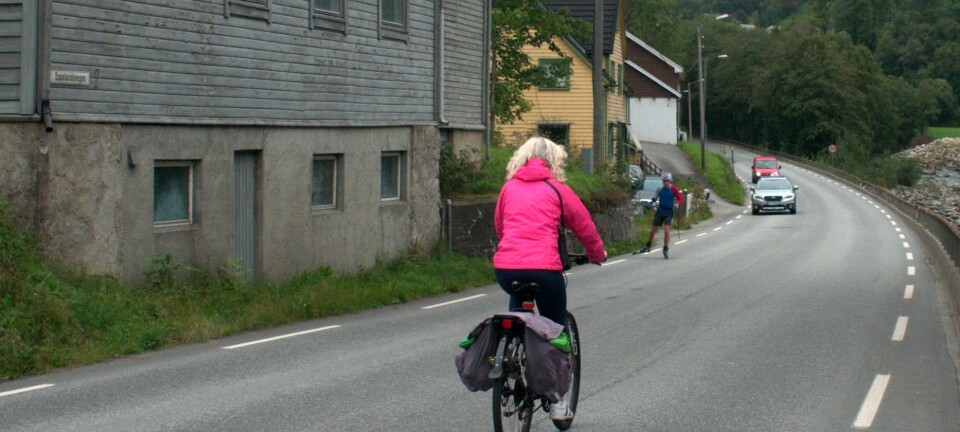
Both pedestrians and drivers are angry with the cyclists
The coronacrisis has led to an increase in cyclists on Norwegian roads. But the sharing of roads with cars and pedestrians creates frustration and potentially dangerous situations according to a new study.
Pedestrians, drivers and cyclists all have a right to space on the roads. But conflicts often arise between the three.
Researchers from The Institute of Transport Economics (Transportøkonomisk institutt, TØI) have talked to road users all over Norway to ask them what makes them feel unsafe and frustrated in traffic.
Pedestrians feel that the cyclists come too close to them, while the car drivers find that cyclists don’t signal well enough.
The sharing of the roads appears to be one of the biggest problems. Both pedestrians and car drivers have to share their roads with the cyclists and e-scooters.
And increasingly so now, as authorities have asked people to stay away from public transport to avoid transmission of the coronavirus, which has led to a huge increase in people who cycle to work in cities like Oslo.
Close encounters
The spring of 2020 saw a 50 per cent increase in cyclists compared to the spring of 2015, according to an article in the newspaper Dagsavisen. This increase held up throughout the summer in Oslo, according to an article on NRK, stating that there has never before been such an increase in cyclists in Oslo. Cities all over the country experienced an increase in cyclists, except Bodø and Tromsø in Northern Norway, who experienced a decline.
“Pedestrians find it particularly frustrating to share their sidewalks”, says Katrine Karlsen, researcher at TØI.
“They experience that cyclists and e-scooters surprise them from behind”, she says.
While everybody seems to have issues with the cyclists, the cyclists themselves find encounters with cars, trucks and buses to be the most frustrating. They say vehicles get far too close when passing them, and many of the drivers don’t give way, even when they’re supposed to.
The problem isn’t just that road users get frustrated. This frustration, which can lead to anger, may result in dangerous situations.

Uncertainty can lead to cooperation
Another finding from the study is that road users – pedestrians, drivers and cyclists – all lack knowledge about the duty to give way.
For instance, every tenth driver believes that a cyclist riding straight ahead has a duty to stop and give way to a car driving on the same road, if this car is taking a right turn.
The right answer is that the car has to stop and let the cyclist pass.
But insecurities around traffic rules can be a good thing, according to the researchers. It may lead to road users communicating and negotiating more in traffic.
For instance, cars do not have to stop for cyclists who want to cross a zebra crossing if they are riding the bike. But the fact that many do is probably a good thing.
When asked what they themselves did to contribute to a better traffic flow, all three groups answered that they try to establish eye contact to see who gets to pass first.
Many of the pedestrians and drivers in the study were of the opinion that cyclists were the least interested in cooperating in traffic.

Cyclists should behave like car drivers
Aksel Tjora is a professor of sociology at NTNU. He has done research on what happens when people meet in traffic.
Tjora believes it is a good idea for cyclists to stick to the roadway rather than the sidewalks. This he believes will make the cars reduce their speed, and demand their attention.
As a cyclist you want efficiency, and in that case, it is almost always best to behave as if you are driving a car, he has previously said to sciencenorway.no.
Tjora believes that Norway should give bicycles to all children in the first grade, as cycling should be something everybody does. He also suggests lower speed limits in cities, a prohibition to cycling on the sidewalk and that buses should have their own bus lanes where possible.
More training and police road checks
The road users in the study were asked about solutions to the problem. Respondents among other things asked for more police road checks to ensure that people follow the rules.
Many also suggest more training in the rules of traffic also for those who do not drive cars, but for instance who cycle instead.
The researchers highlight two reasons for conflict where measures need to be taken, like for instance information campaigns:
The first is about blind zones and duty to give way. Conflicts often arise in intersections when cars and trucks go right, as cyclists, e-scooters and pedestrians are going straight. Many of the most serious traffic accidents happen in these situations.
The other is poor signaling, like using turn signals.
———


































